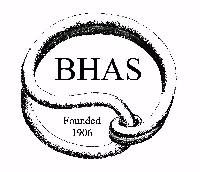|
|
|
Meetings
at Unitarian
Church, New Road, Brighton starting at
7.30 pm
Note on
the 8th December 2023, the AGM will start at 7pm, with the lecture
starting at 7.30pm
Free
entry for members, £4
to
non-members.
Click
Here for Local Map |
|
|
|
|
Topic |
|
Speaker |
|
2023 |
|
|
|
|
|
Friday 13th October |
|
Digging the Durotriges:
Excavations in Bronze and Iron Age Dorset 2021-23
Excavations restarted on the
Durotriges Project, an investigation by Bournemouth University into
the settlements and cemeteries of Bronze and Iron Age Dorset, in
2021, at Winterborne Kingston near Bere Regis. In that time two Later
Bronze Age farms and an Iron Age banjo enclosure, containing over 65
pits, have been excavated together with a small Iron Age cemetery.
This talk will show how these ongoing excavations, together with
other surveys of the county, are helping reconstruct prehistoric
activity in central SW Britain before the arrival of Rome.
|
|
Dr Miles Russell |
|
Friday 10th November |
|
A History of the Adur valley
To most people driving along
the A27 the words ‘Adur valley’ mean a good view of Lancing
College Chapel, Shoreham Airport, Old Shoreham Toll Bridge and, to
the north, perhaps a glimpse of the ruins of Bramber Castle - but
there is much more to it than that. The Adur valley, with its tidal
river, was once a broad sea estuary where coarse brown salt was made
in medieval times. Ships made their way on the tide as far as
Steyning, bringing wine and other goods from overseas. Smuggling was
rife, the proximity of Brighton in Regency times encouraging the
illegal importation of opera glasses, tea, coffee, musical boxes and
leather gloves, as well as the more commonly perceived spirits, wines
and tobacco.
Come and hear about the ‘Stone-Age
doughnuts’ of Old Erringham and the lack of wild oats at
Applesham Farm. Find out what some of the Coombes’ Church wall
paintings mean and something about St. Botolph. Bramber Castle had
been a ruin for more than a century by the time the Royalists and
Roundheads clashed at Bramber bridge in 1643, but the uncrowned
Charles II did pass that way in 1651 on his flight from the Battle of Worcester.
Janet Pennington lived at
Botolphs in the Adur valley for some years, worked on several
archaeological excavations in the area, was archivist at Lancing
College, and prior to 1968 handed over many sixpences in order to
pass over Old Shoreham Toll Bridge by car on the former A27 route.
Luckily she was not on the Southdown double-decker bus that plunged
into the river on 1st January 1949, but that story does have a happy ending.
|
|
Dr Janet Pennington |
|
Friday 8th December |
|
BHAS AGM followed by:
Crete: The Myth of the
Minotaur and the archaeology of the Minoans
Crete is best known in
Greek Mythology as the home of King Minos, his wife Pasiphae, their
daughters Ariadne and Phaedra and Pasiphae's child, the Minotaur.
According to the myth, the half-bull, half-man was housed in a
labyrinth and killed by the hero Theseus. But who were the Minoans
and how did their civilisation, which has been described as the
earliest of its kind in Europe, develop into a strong maritime entity
which traded throughout the Aegean, notably on mainland Greece, and
with Egypt?
This lecture will look at the
archaeological evidence we have for the Aegean Bronze Age
civilization on the island of Crete, which flourished from about 2600
to 1100 BC and was rediscovered at the beginning of the 20th century
through the work of British archaeologist Arthur Evans
(N.B. The AGM
will take place at 7.00, immediately before Janet's lecture. There
will be drinks and nibbles after the Lecture).
|
|
Sarah Green |
|
2024 |
|
|
|
|
|
Friday 9th February |
|
Saxon and Highdown Hill.
Arguably the most important
Saxon cemetery in Sussex, this lecture will look at new evidence from
Highdown Hill and discuss the potential for future investigations at
this most enigmatic of sites. The story of its discovery in the 1890s
through to our reanalysis of the grave goods will be covered, in
addition to looking at trends in the Worthing area from the end of
Roman Britain to the coming of the Normans.
|
|
James Sainsbury |
|
Friday 8th March |
|
Life, Death and Times in
the Bronze Age.
Recent archaeological
discoveries in Britain have revealed unexpectedly ordered and complex
understandings by Bronze Age people of their world some three
thousand years ago. Mike Parker Pearson will talk about his
excavations in the Western Isles of Scotland and how they have helped
to transform our knowledge of how treatment of the dead, including
exhu-mation and mummification, and of how people lived their daily
lives in roundhouses according to a variety of tem-poral cycles. More
complex notions of time and astronomi-cal measurement are also
evident in some of the monu-ments and sacrificial remains from the
period more widely across Britain.
|
|
Mike Parker Pearson |
|
Friday 12th April |
|
Recent discoveries in the
Roman city of Colchester
Recent discoveries in the
Roman city of Colchester; military buildings, declining townhouses,
the bathhouse and extramural burial, settlement & industry.
|
|
Adam Wightman |
|
|
|
|
|
|
|
|
|
|
|
|
Admission Free to BHAS
Members, £4 to Non-Members

|
|
